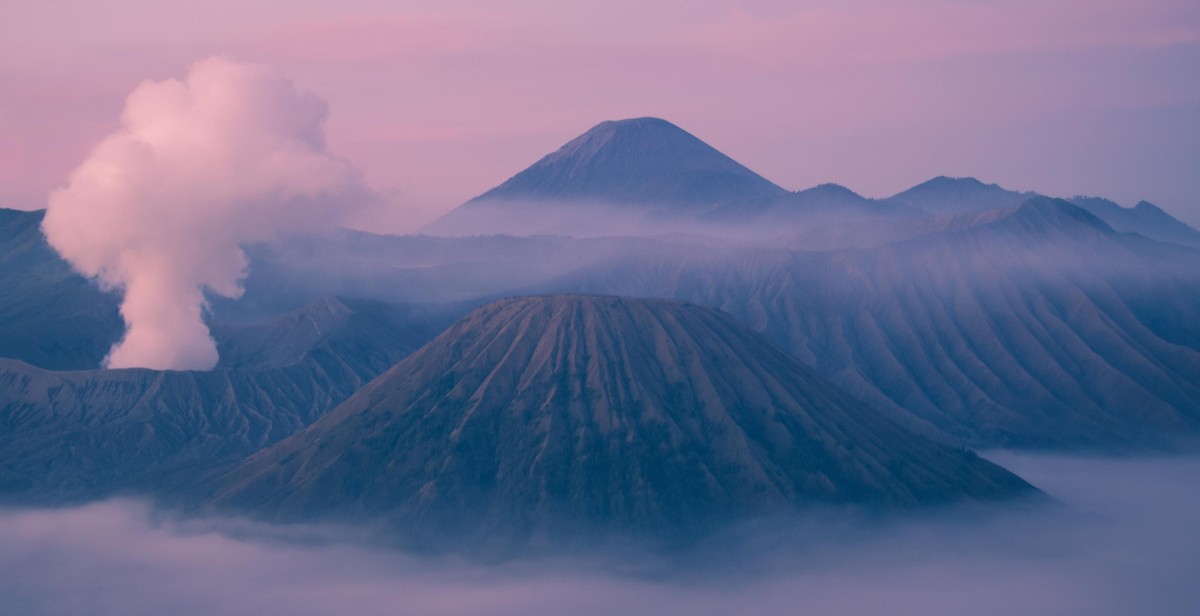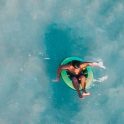Introduction
Welcome to “Volcano Adventures: A Guide to Safe and Scenic Treks”! This comprehensive guide is designed to provide you with all the information you need for an exhilarating and safe journey into the world of volcanoes.
Volcanoes have always fascinated adventurers and nature enthusiasts alike. From their majestic beauty to their raw power, these geological wonders offer an unforgettable experience for those willing to explore them. However, venturing into volcanic landscapes requires careful planning and preparation to ensure a safe and enjoyable trip.
In this guide, we will take you on a virtual tour of some of the most stunning and accessible volcanoes around the world. Whether you are a seasoned hiker or a beginner, we have tailored our recommendations to suit all levels of experience and fitness.
We will cover essential topics such as choosing the right gear, understanding volcanic activity, and staying safe during your trek. Additionally, we will share insider tips on capturing breathtaking photographs and making the most of your adventure.
So, if you are ready to embark on a thrilling journey into the heart of nature’s fiery spectacles, let “Volcano Adventures: A Guide to Safe and Scenic Treks” be your companion. Get ready to witness the awe-inspiring beauty of volcanoes while ensuring your safety every step of the way.
Understanding Volcanoes
Volcanoes are fascinating geological formations that have captivated the human imagination for centuries. These majestic structures are born from the fiery depths of the Earth, unleashing their power in spectacular eruptions that shape the surrounding landscapes. To fully appreciate the wonders of volcanoes, it is essential to understand their nature, types, and formation.
What are Volcanoes?
Volcanoes are openings in the Earth’s crust through which molten rock, volcanic gases, and other materials are ejected. They are usually found at the boundaries of tectonic plates, where the Earth’s crust is subject to intense geological activity. When pressure builds up beneath the surface, it can result in an eruption, releasing the pent-up energy in the form of lava, ash, and gases.
Volcanoes come in various sizes and shapes, ranging from small cones to massive mountains. They can be active, dormant, or extinct, depending on their recent eruption history. Active volcanoes are those that have erupted in the past few centuries or are showing signs of current activity. Dormant volcanoes, on the other hand, are inactive but have the potential to erupt again in the future. Extinct volcanoes are those that have not erupted in thousands of years and are unlikely to erupt again.
Types of Volcanoes
There are several types of volcanoes, each with its unique characteristics:
- Shield Volcanoes: These volcanoes have a broad, gently sloping shape resembling a warrior’s shield. They are typically formed by the accumulation of fluid lava flows over time. Shield volcanoes are known for their relatively calm eruptions, which often produce streams of lava rather than explosive eruptions.
- Composite Volcanoes: Also known as stratovolcanoes, these are tall, conical mountains with steep sides. Composite volcanoes are built up by alternating layers of lava flows, volcanic ash, and other materials. They are characterized by explosive eruptions that can produce pyroclastic flows, ash clouds, and lava flows.
- Cinder Cones: These are the simplest and smallest type of volcano. Cinder cones are formed by explosive eruptions that eject fragments of lava into the air. The lava cools quickly and falls back to the ground, forming a cone-shaped hill with a crater at the top. They are usually short-lived and often found alongside larger volcanoes.
- Calderas: Calderas are large, basin-shaped depressions that form when a volcanic cone collapses after a massive eruption. These volcanic craters can be several kilometers in diameter and may contain lakes or smaller volcanic cones within them. Calderas are often associated with highly explosive eruptions.
Volcano Formation
Volcanoes are formed through a combination of geological processes. Most commonly, they occur at convergent plate boundaries, where two tectonic plates collide or one plate subducts beneath another. The subducting plate releases water and other volatile substances, which reduce the melting point of the surrounding mantle material, causing it to melt and rise to the surface as magma. This magma then accumulates beneath the crust, eventually leading to volcanic activity.
Volcanic activity can also occur at divergent plate boundaries, where tectonic plates move apart, allowing magma to rise and fill the gap. Additionally, hotspots, which are areas of intense heat beneath the Earth’s crust, can also give rise to volcanoes. These hotspots remain stationary while the tectonic plates move above them, creating a chain of volcanic islands or mountains.
Understanding the nature, types, and formation of volcanoes is crucial for anyone venturing into volcano-adventures. It allows for a deeper appreciation of the awe-inspiring power and beauty of these geological wonders.
Volcano Safety Tips
When embarking on a volcano trek, it is crucial to prioritize safety at all times. Volcanoes are natural wonders that can be both awe-inspiring and dangerous. By following these volcano safety tips, you can ensure a safe and enjoyable adventure.
Before Your Trek
Prior preparation is key to a successful volcano trek. Here are some important safety measures to take before your journey:
- Research the volcano: Familiarize yourself with the specific volcano you plan to visit. Understand its history, eruption patterns, and current activity. This information will help you assess the potential risks.
- Check local authorities: Stay updated with the latest information from local authorities, such as park rangers or volcano monitoring agencies. They can provide valuable insights on safety conditions and any ongoing volcanic activity.
- Equip yourself: Pack essential safety gear, including sturdy hiking boots, a helmet, protective eyewear, and a respirator mask to guard against volcanic gases and ash. Additionally, carry a first aid kit, a map, a compass, and a flashlight.
- Inform others: Share your trekking plans with a friend or family member. Provide them with details about your intended route, expected duration, and emergency contact information. This ensures that someone knows your whereabouts in case of an unforeseen event.
During Your Trek
While exploring a volcano, it is crucial to remain vigilant and follow these safety guidelines:
- Stay on designated paths: Stick to established trails and avoid venturing into restricted or hazardous areas. These paths are designed to minimize risks and protect both visitors and the environment.
- Observe warning signs: Pay close attention to any warning signs or signals provided by park authorities. These signs are in place to ensure your safety and may indicate potential hazards or restricted zones.
- Monitor weather conditions: Keep an eye on weather forecasts, as adverse weather can increase the risk of volcanic activity. Avoid trekking during storms or intense rainfall, as they can trigger landslides or create dangerous conditions.
- Be cautious of volcanic gases: Volcanoes emit various gases, some of which can be harmful or even lethal. If you encounter strong odors, experience difficulty breathing, or notice vegetation wilting, consider wearing a respirator mask and move to a safer location.
- Avoid unstable areas: Refrain from walking on loose or crumbly volcanic rocks, as they can be unstable and cause slips or falls. Stick to solid ground and use caution when navigating steep slopes.
After Your Trek
Your safety measures shouldn’t end when you complete your trek. Here’s what to do after your volcano adventure:
- Clean and inspect your gear: Thoroughly clean your equipment, removing any volcanic ash or debris. Inspect your gear for any damage and address it before your next trek.
- Seek medical attention if necessary: If you experience any unusual symptoms after your trek, such as respiratory issues or skin irritation, seek medical advice promptly. Inform the healthcare provider about your volcanic exposure.
- Report any observations: If you noticed any changes or abnormalities during your trek, such as new fumaroles or ground cracks, report them to the local authorities or park rangers. Your observations can contribute to ongoing volcano monitoring efforts.
- Reflect on your experience: Take the time to reflect on your volcano trek and learn from the experience. Consider what went well and what could be improved for future adventures.
By following these volcano safety tips before, during, and after your trek, you can enjoy the breathtaking beauty of volcanoes while minimizing the risks associated with these natural wonders.

Scenic Volcano Treks Around the World
Embarking on a scenic volcano trek is an awe-inspiring adventure that offers a unique perspective into the raw power and beauty of nature. Here are three remarkable volcanic destinations to consider for your next expedition:
1. Mount Kilimanjaro, Tanzania
As the highest free-standing mountain in Africa, Mount Kilimanjaro presents an iconic trekking experience. This dormant volcano boasts diverse landscapes, from lush rainforests to alpine meadows, before reaching its snow-capped summit. The breathtaking views from Uhuru Peak make the challenging ascent well worth it. Guided tours are available, ensuring a safe and enjoyable journey.
2. Mount Fuji, Japan
Located on Honshu Island, Mount Fuji is an active stratovolcano and a symbol of Japan. Its perfectly symmetrical cone shape attracts thousands of climbers each year. Ascending this sacred mountain provides stunning vistas of surrounding lakes, forests, and charming villages. The climbing season is limited to July and August, with multiple routes available for hikers of varying skill levels.
3. Mount Vesuvius, Italy
For a captivating blend of history and nature, Mount Vesuvius near Naples is an excellent choice. This infamous volcano famously erupted in 79 AD, preserving the ancient city of Pompeii beneath its ash. Today, visitors can hike up to the crater’s edge and witness panoramic views of the picturesque Bay of Naples. It’s advisable to join a guided tour to ensure a safe and informative journey.
Remember to check local regulations and weather conditions before embarking on any volcano trek. Proper gear, physical fitness, and acclimatization are essential for a safe and enjoyable experience. Whether you choose Mount Kilimanjaro, Mount Fuji, or Mount Vesuvius, each trek promises an unforgettable adventure amidst some of the world’s most breathtaking landscapes.
